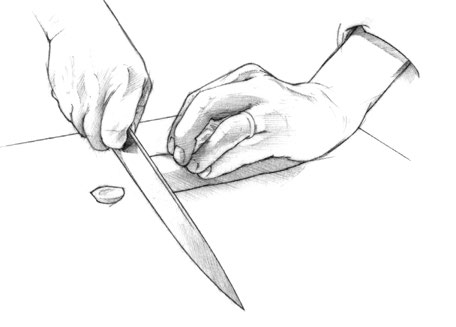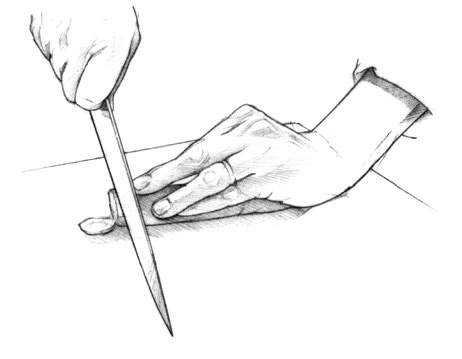On the other hand
Both hands play a role in how to use a chef’s knife, as well as all other knives. The hand not holding the knife, called the guide hand, is very important because it’s holding and guiding the food being cut.
The first illustration on page 9 shows the correct and safe way to hold the food, with your fingers almost standing up. This forms a shield, or barrier, when you’re cutting the food. Plus, it removes your fingertips from being anywhere near the knife’s blade. Since there’s rarely a time when you need to pick your knife tip up from the cutting board, your knife will not be rising above your bent fingers. Which means you won’t cut them. The one problem with doing it this way is that it feels awkward and unnatural until you’ve practiced it for a while.
The second illustration shows the wrong way to hold the food being cut, with the hand resting in a natural position. Most people hold their food like this for two reasons: it’s more comfortable, and they’ve been doing it this way forever. The problem with this technique is that it exposes all of your fingers to being cut when the knife slips. Not if the knife slips. When the knife slips.










